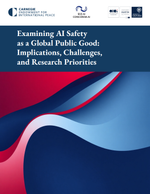Global Ecology and Conservation
Alfino, S. and Roberts, D. L.
View Journal Article / Working PaperAchieving sustainability in international wildlife trade encompasses a series of challenges, such as identification uncertainty for taxonomically complex groups. Although CITES has developed a ‘look-alike’ policy to collectively manage trade in morphologically similar species and thus facilitate enforcement, its effective application with regards to the export quota system is questionable. We used a multidisciplinary approach to provide an understating of the trade in a taxonomically complex genus of Malagasy chameleons. An online systematic survey of trade was undertaken to identify which species of Calumma have been the subject of trade. A matching task was employed to calculate identification error rates among species in the genus. Results suggest that the online market for Calumma is thriving, including species with long-standing zero quotas. Identification error rates varied widely, reaching high levels of error for some species pairs here identified as ‘look-alike’ species. Findings suggest manual identification technique has varying reliability, potentially resulting in misidentification by stakeholders within the trade. Such errors have negative consequences for both chameleon conservation and the long-term socio-economic development of Madagascar. An understanding of the patterns of identification error can help tailor future management and policy plans.




